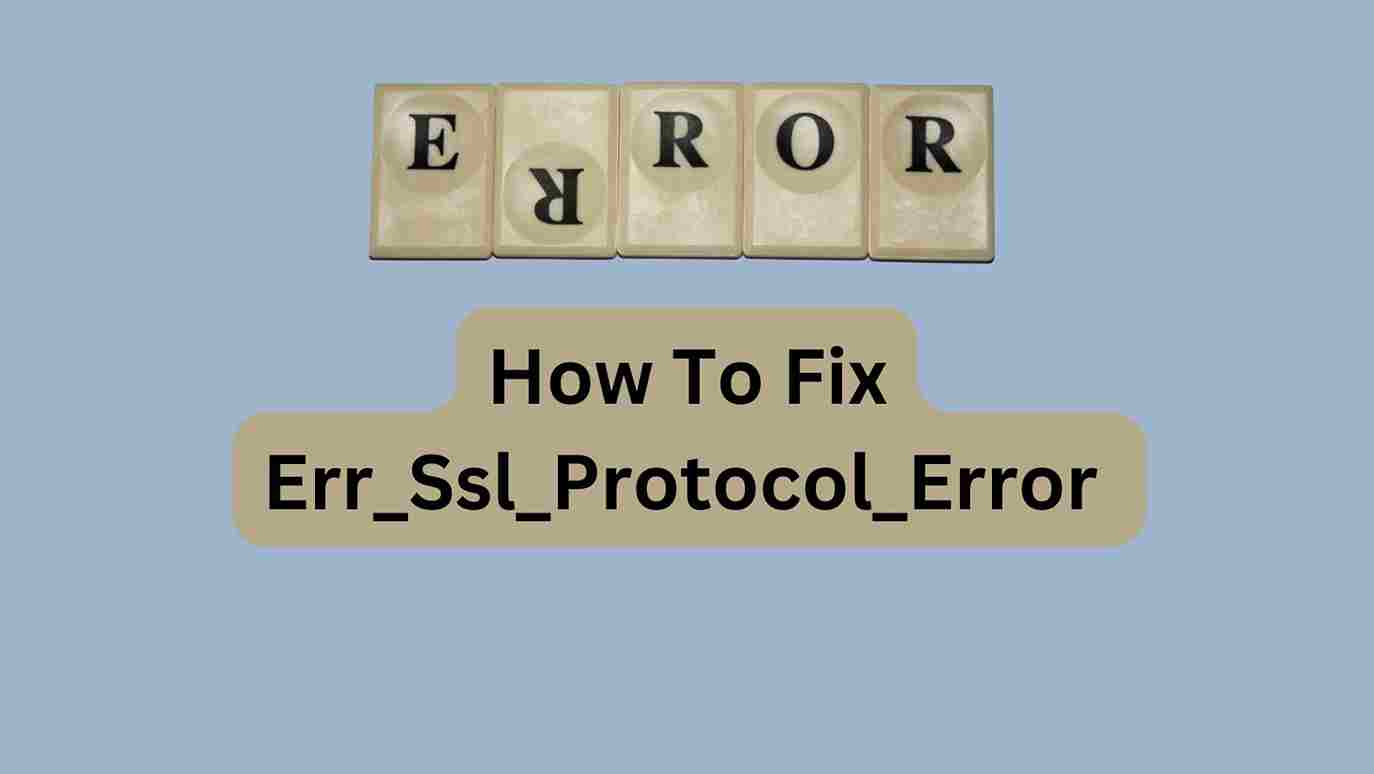Introduction
You may have seen the err_ssl_protocol_error message in your web browser, and you’re not sure how to fix it. Don’t worry, we’re here to help. In this article, we’ll walk you through the steps to fixing this error.
First, let’s take a look at what causes this error and some of the possible solutions. Then, we’ll walk you through the steps to fixing it on your computer. Finally, we’ll give you some tips for preventing this error from happening in the future.
What Is Err_ssl_protocol_error?
Err_ssl_protocol_error is an error that can occur in Google Chrome when you’re trying to access a website. It usually pops up when there’s a problem with the website’s SSL certificate, which is used to encrypt data and create a secure connection.
This error can be frustrating because it prevents you from accessing the website you’re trying to visit. But don’t worry, we’re here to help. In this article, we’ll walk you through step-by-step instructions on how to fix err_ssl_protocol_error.
How to Fix Err_ssl_protocol_error?
Follow these simple steps to fix the error:
- Close all your browsers and then restart your computer.
- Check your internet connection and make sure you’re not experiencing any problems.
- Disable your firewall and then try to open the website again.
- Update your browser to the latest version.
- If nothing works, try using a different browser.
Understanding the Different Types of Err_Ssl_Protocol Errors
There are several different types of Err_Ssl_Protocol errors, and each one requires a different solution. To help you understand the different types of errors, we’ve put together a list of the most common ones:
- The server certificate is not trusted: This error typically occurs when the server name in the URL doesn’t match the name on the server certificate. You can fix this by adding the server’s hostname to your trusted sites list or by installing the server’s root certificate.
- The SSL protocol has been disabled: This error usually indicates that SSL has been disabled on the web server. You can try to enable SSL again or use a different protocol, such as TLS.
- The connection has been interrupted: This error may occur if your internet connection is unstable or if there is a problem with your network. You can try to troubleshoot your network connection or wait for the problem to fix itself.
- The security protocol is not supported: This error may occur if you’re using an unsupported security protocol. You can try to enable a different security protocol or use a workaround such as changing the port number.
What to Do if You Can’t Resolve Your Err_Ssl_Protocol Error
If the steps mentioned above don’t seem to be working, and you still can’t resolve your error_ssl_protocol error, it’s time to move on to other options.
You can try contacting your internet service provider or the website you are trying to visit as they might be able to provide more information or help you resolve the issue.
You might also have luck with a web search for your particular error code, as others with the same issue may have already provided suggestions for how to solve it.
Additionally, forums, where users share computer problems and solutions, are good places to post about the issue and get advice from tech-savvy members.
Above all, don’t panic! It can take some trial and error (and maybe even a bit of research) to fix this kind of error — but with a bit of persistence, you should be able to find a solution.
Troubleshooting Err_Ssl_Protocol Errors
Now that you know the common causes of err_ssl_protocol_error, it’s time to troubleshoot. Here are some solutions to this issue:
- Step 1: Check the SSL certificate. Make sure that the SSL certificate is up to date and valid – if not, try contacting the website administrators.
- Step 2: Clear your browser cache and cookies. Start off by deleting your browser cache and cookies; this can often fix issues related to err_ssl_protocol_error.
- Step 3: Check your internet connection. Make sure you have a stable internet connection and try again; if possible, try rebooting your router as well.
- Step 4: Reset your network settings. If all else fails, reset your network settings – this can often fix the err_ssl_protocol_error issue.
- Step 5: Contact a computer technician. If all else fails, contact a computer technician who might be able to help you further resolve this issue.
Check Your Computer’s Time and Date Settings
If your computer’s clock is not set to the current date and time, this can lead to err_ssl_protocol_error. To fix it, you’ll need to check your computer’s date and time settings.
You can access the Settings app on Windows or the System Preferences app on Mac. Make sure that the Date & Time settings are set correctly and then try accessing the website again. If that doesn’t work, you may need to enter the exact server time manually.
If your system is connected to a Wi-Fi network, you can also enable Network Time Protocol (NTP) in the same menu. This will sync your clock with an online server so it stays updated and can prevent errors like this one in the future.
Clear SSL State
The next step you’ll want to take is to clear the SSL state. This will essentially reset your browser’s security settings, so they don’t conflict with the website you’re trying to access. Here’s how to do it:
- In Chrome: Go to the Chrome menu and select Settings. Scroll down and click on Advanced, then click on Clear browsing data. Tick the box next to Cached images and files, then click Clear data.
- In Firefox: Go to Tools > Options > Privacy & Security > scroll down to Certificates and select Clear SSL state at the bottom of this section.
- In Edge: Go to Settings > Privacy & Services > Security & Privacy > scroll down and select Clear browsing data > checkmark Cached data and files then select Clear now.
If your browser still fails after these steps, try a different one or contact the website support team for further assistance.
Update Your Browser With the Latest Version
Your browser may be playing a role in your ERR_SSL_PROTOCOL_ERROR problem. It’s important to keep your browser up to date as the latest versions often contain patches for various security and stability issues.
Depending on which browser you’re using, updating is usually as simple as opening up the settings menu and clicking ‘Check for updates’. If an update is available, follow the on-screen instructions to install it.
Once your browser has been updated, restart your computer and see whether that has made a difference. If not, there are still a few more things you can try before giving up.
Frequently Asked Questions About the Err_Ssl_Protocol Error

If you’re still in the dark about the err_ssl_protocol_error, there are a few common questions that may help shed some light on the subject. For starters, what exactly is the error_ssl_protocol error? Put simply, this error is encountered when your browser is unable to establish a secure connection with a website. It’s generally caused by an outdated TLS version or unsupported SSL protocol.
Another common question is what kind of browsers can you experience this type of error in? The answer is any web browser! Whether you use Chrome, Firefox, Edge, Safari, or any other browser, they can all be susceptible to this error.
Finally, people often ask how to prevent these errors from happening in the future. The best way to make sure you avoid them would be to keep your browser up to date with the latest versions. Additionally, make sure your computer has all of its security updates applied and that you trust any websites you are visiting. Following these steps should help keep errors like err_ssl_protocol at bay.
Conclusion
So there you have it—a simple step-by-step guide to fixing the err_ssl_protocol errors. Just follow these steps, and you’ll be surfing the web error-free in no time!
See Also: How To Tackle The Annoying “Missing DLL File Error” On Your Windows PC










